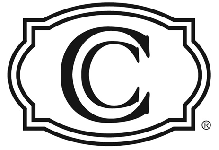What Is Chocolate, Anyway? - from...
 Creative
Chocolates
Creative
Chocolates

-
- Cultivation of cacao trees can occur
only in tropical climates, 20 degrees north or south of the equator. Principal
growing areas include West Africa, Brazil, Ecuador and the Indies. Generally,
it takes five years before trees begin bearing fruit in the form of pods.
Each pod contains an average of 20 to 40 cream-colored cocoa beans. Nearly
400 beans are required to make a pound of chocolate liquor, the semi-liquid
mass produced by grinding the beans. A non-alcoholic substance, chocolate
liquor is the basis of all chocolate and cocoa products.
-
- Once harvested, the beans undergo fermentation,
during which they begin to develop their characteristic brown color. Then
the beans are dried and shipped to the U.S. and other chocolate manufacturing
countries, where chocolate manufacturers clean and roast the beans. After
removal of their outer shells, the beans are broken into smaller pieces
known as the meat, or "nibs". The nibs, which contain an average
of 53% cocoa butter, are then ground, generating enough heat to liquefy
the cocoa butter and produce chocolate liquor. Chocolate liquor can be
processed into cocoa powder by pressing most of the cocoa butter out of
the chocolate liquor. Dutched cocoa powder is natural cocoa powder with
the acidity neutralized. It has a darker color and different flavor.
-
- Cocoa butter is the natural fat of the
cocoa bean. It has a delicate chocolate aroma, but is very bitter tasting.
It is used to give body, smoothness, and flavor to eating chocolate. Or
the liquor can be poured into molds, cooled and hardened to become unsweetened,
or baking, chocolate. The higher the cocoa butter content, the thinner
the viscosity of the end chocolate product. The majority of chocolates
made in Europe have a higher cocoa butter content than those made in the
U.S.
-
- Chocolate liquor plus cocoa butter, sugar and vanilla
flavoring are processed to produce dark, flavorful chocolate. Different
chocolate liquor ratios produce sweet, semisweet and bittersweet chocolate.
To make milk chocolate, fresh whole milk is added to this mixture. White
chocolate is a mixture of cocoa butter, sugar, milk and vanilla flavoring.
Some chocolate manufacturers use pure artificial vanillin rather than pure
vanilla as a flavoring and use milk solids rather than whole milk. Some
dark chocolates also may contain milk products.
-
- The mixture of cocoa butter, chocolate
liquor and other ingredients is finely ground into a smooth paste. Then
it is "conched", or kneaded, often for days, to develop its flavor
and to produce its smooth texture. Following a tempering period, the mixture
is poured into molds, cooled, wrapped, and packaged for shipment to the
consumer or for use as an ingredient in other products.
-
- Many large chocolate manufacturers make
a wide variety of chocolates with varying tastes and degrees of smoothness.
Many factors affect the flavor, texture and final cost of chocolate, including
the types and mix of cocoa beans used; the amount of added cocoa butter,
sweeteners and flavoring; and "conching" time.
-
-
- Confectionery coating (also known as "summer"
coating) is a product made by substituting vegetable fats (such as palm
kernel, corn, or soy bean oils) for cocoa butter. Products made with vegetable
fats may be flavored to taste like chocolate. They are, however, not legally
allowed to be labeled as "chocolate"; they must be labeled "chocolate
flavored".
-
- Adapted from material produced by the Chocolate Manufacturers' Association.
-
- Call
for more information: (210) 824-2462 or
e-mail us!
[ Home Page | Back to Information Index ]
[ Want a Catalog or Brochure? Click
Here! ]